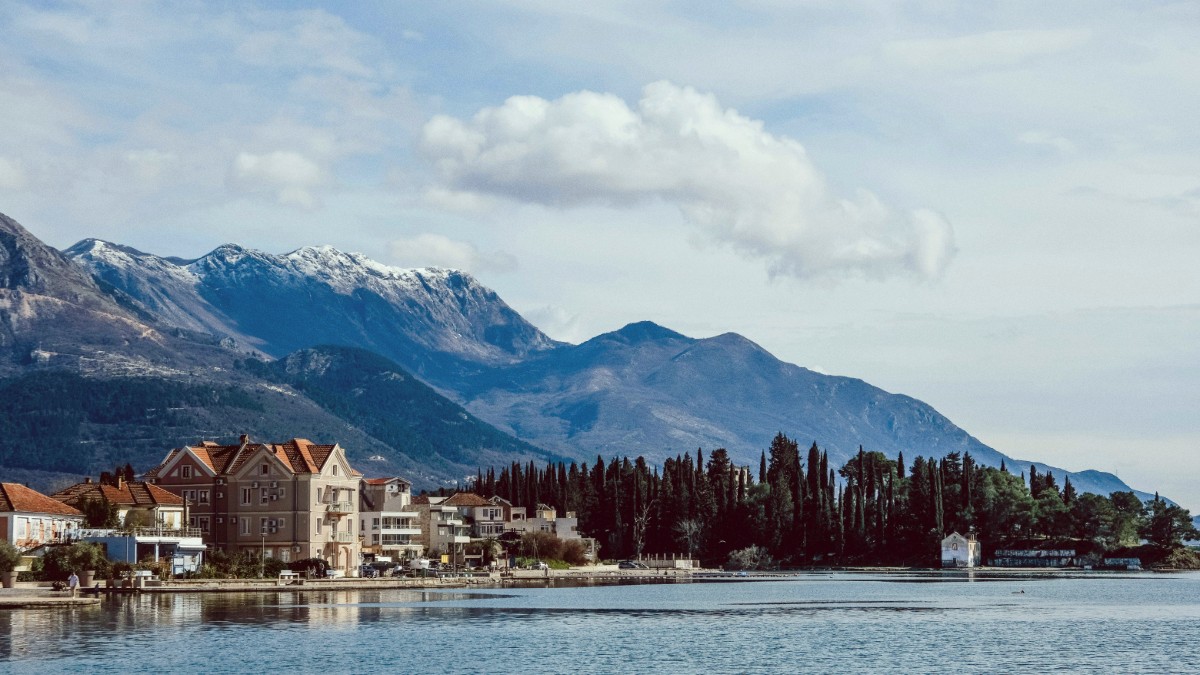
Montenegro
Coastal Tivat cuisine features fresh seafood, olive oil, and Mediterranean herbs. Inland regions feature more meat and cheese.
Expect fresh fish (sea bass, bream, octopus), local cheeses (Njeguški sir), cured meats (Njeguški pršut), and fresh vegetables. Grilling is a common preparation method.
Coastal Tivat cuisine heavily features dishes from the Bay of Kotor, like "buzara."
Njeguši prosciutto and cheese, from a nearby village, are staples here.
Dishes often highlight natural flavors with minimal ingredients, often grilled.
Creamy risotto, colored and flavored with squid ink, often containing other seafood.
Find in most seafood restaurants along the coast.
Flavorful seafood stew with mussels or shrimp in white wine, garlic, and tomato sauce.
Common in konobas and seafood restaurants in Bay of Kotor.
Ćevapi: Grilled minced meat sausages. Peka: Meat/octopus cooked slowly under a metal bell.
Ćevapi: casual eateries. Peka: traditional restaurants, often requires advance ordering.
Small fried dough balls, often with honey or cheese, similar to fritters.
A popular cream cake with a puff pastry base, light and sweet.
Sophisticated culinary experiences with elegant ambiance.
Comfortable dining with a balance of quality and price.
Affordable eats and places to buy fresh ingredients.
Numerous restaurants within Porto Montenegro offer Italian, Asian, and Mediterranean dishes.
Caters to diverse tastes with upscale options.
Pizzerias and burger joints located in Tivat center present familiar choices.
Convenient for quick, universally recognized meals.
Vegetarian options increasingly available. Vegan requires clear communication.
Growing awareness; explain "bez glutena." Focus on natural options.
Translation apps or dietary cards are helpful for allergies.
Accommodation with kitchens offers most control over diet.
Seafood is freshest in summer. Truffles appear on menus in autumn/winter.
Local festivals may feature specific traditional dishes.
Luxury dining experience on a privately chartered yacht in Porto Montenegro or Boka Bay.
Catering services are often available from yacht charter companies.
Check local tourism calendars for events featuring delicacies and festive atmospheres.
Tivat Green Market provides insights into local produce and culinary habits.
Visit olive groves on the Luštica peninsula for a taste of local production.
Explore wineries near Herceg Novi, like Savina Winery, for tasting sessions.
Some guesthouses or small family-run establishments might offer informal demonstrations.
Explore Tivat's culinary landscape with a local guide, discovering hidden eateries.
Opportunities to sample street food and traditional snacks.
Visit local cafes for insights into Montenegro's coffee scene.
Experience the importance of coffee in daily social interactions.
Traditional cheese from Njeguši village, often served as an appetizer alongside prosciutto.
A flavorful red pepper relish, frequently accompanying grilled meats like ćevapi.
A savory, flaky pastry with various fillings, a local favorite for breakfast or a quick snack.
Always confirm ingredients for specific dietary needs. Ask locals for konoba recommendations outside tourist areas.